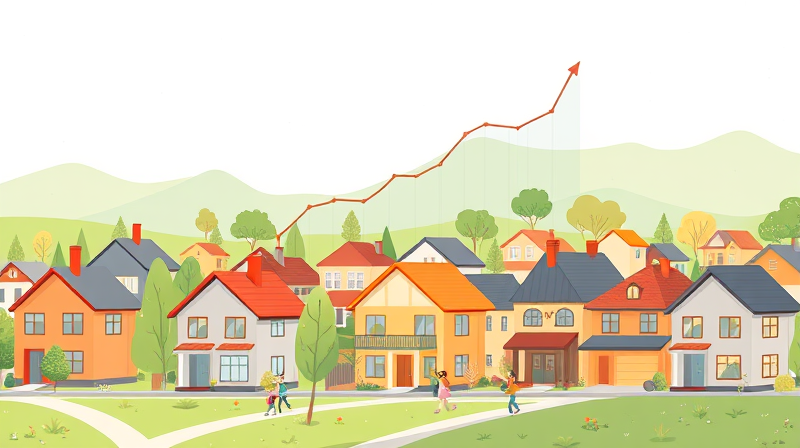
The landscape of homeownership is shifting as interest rates edge higher and inventory begins to recover. While the dramatic price surges of previous years are behind us, the coming months will demand adaptability and foresight from buyers, sellers, and investors alike.
Leading analysts anticipate complex prospects in the post-rate-hike era, where growth takes on a more measured pace. Consensus forecasts vary, but most predict modest gains rather than sharp declines, signaling a market in transition rather than collapse.
In California, the median home price is tipped to climb 4.6% to $909,400, with sales up roughly 10.5%. Despite these increases, affordability remains pinned at near-record lows, underscoring the state’s persistent housing challenges.
Borrowing costs are poised to hover in the 6–7% range through 2025, fueled by ongoing inflation concerns and fiscal pressures. While rates dipped to 6.2% late in 2024, most experts agree they will not fall substantially below 6% in the near term.
Even so, slightly lower mortgage payments and increased leverage could encourage some homeowners to list properties and entice new buyers into the market.
Supply shortages persist, with a 4.4-month inventory versus the 5–6 months needed for equilibrium. Yet inventory is up over 20% year-over-year as sellers begin shedding low-rate mortgages in favor of more balanced markets.
Still, persistent inventory shortages and regional disparities mean some metro areas will enjoy modest gains while others face slight price declines.
New construction, particularly in the multifamily sector, has nudged vacancy rates higher, moderating rent growth and offering buyers more options.
Rent growth is expected to ease further as new units come online. Zillow predicts single-family rents will rise just 2.8% and multifamily by 1.6% in 2025, down from previous years.
Though rents remain high, broader construction activity and rising vacancies offer hope for gradual relief, especially in high-demand urban centers.
Both buyers and sellers face evolving challenges. Buyers gain more negotiating power as listings expand, but must still contend with high price tags and competitive offers. Sellers may hesitate to trade in their locked-in low rates, slowing inventory growth.
As lending costs peak and the Fed hints at easing, commercial activity is primed for a rebound. Office and senior housing sectors will adapt to demographic shifts, while investors stay wary of policy and economic surprises.
Macro factors—like economic growth, inflation trends, and labor market changes—act as wildcards, shaping the pace and direction of recovery across residential and commercial spaces.
Navigating the year ahead requires both vision and discipline. Embracing a nuanced understanding of local market dynamics can reveal pockets of opportunity where competition is lighter and value is greater.
Adopting practical budgeting and strategic negotiation techniques can tip the scales in your favor, whether you’re placing an offer or marketing a listing.
Though the roaring price acceleration of recent years has subsided, the housing market remains full of potential for those who prepare wisely. By staying attuned to evolving rates, inventory levels, and regional nuances, participants can capitalize on opportunities while managing risk.
The coming months promise a more balanced terrain—one where gradual price increases and stabilizing rents merge with improving supply and cautious optimism. Armed with data, expert guidance, and a flexible mindset, buyers, sellers, and investors alike can chart a course toward success in 2025 and beyond.
References













